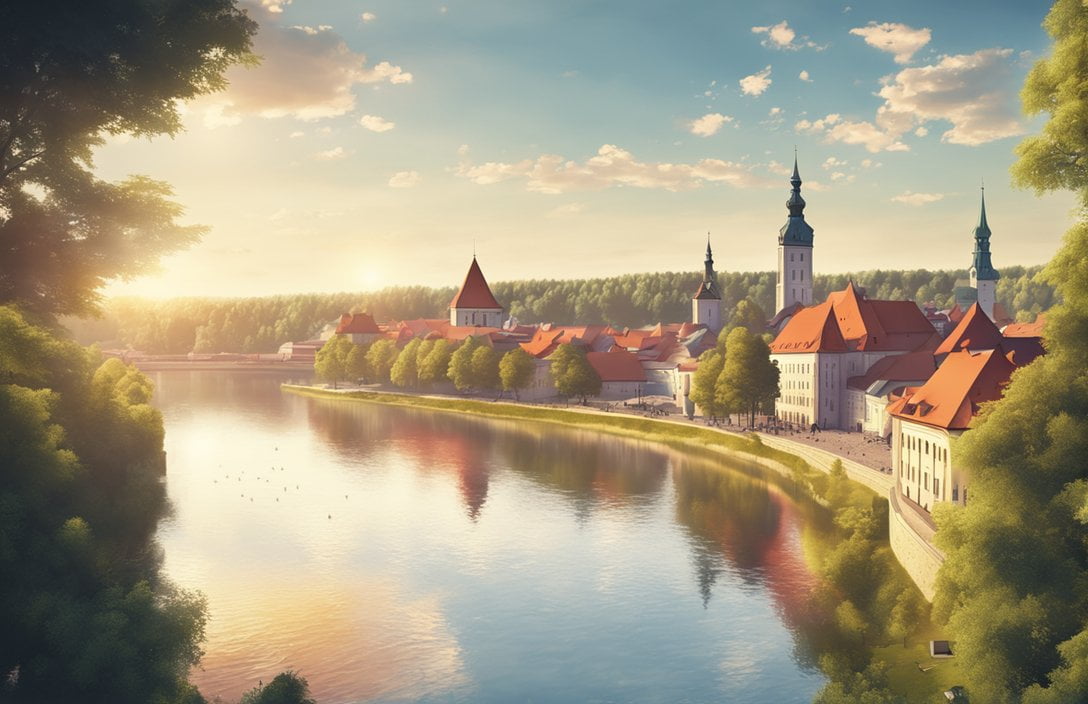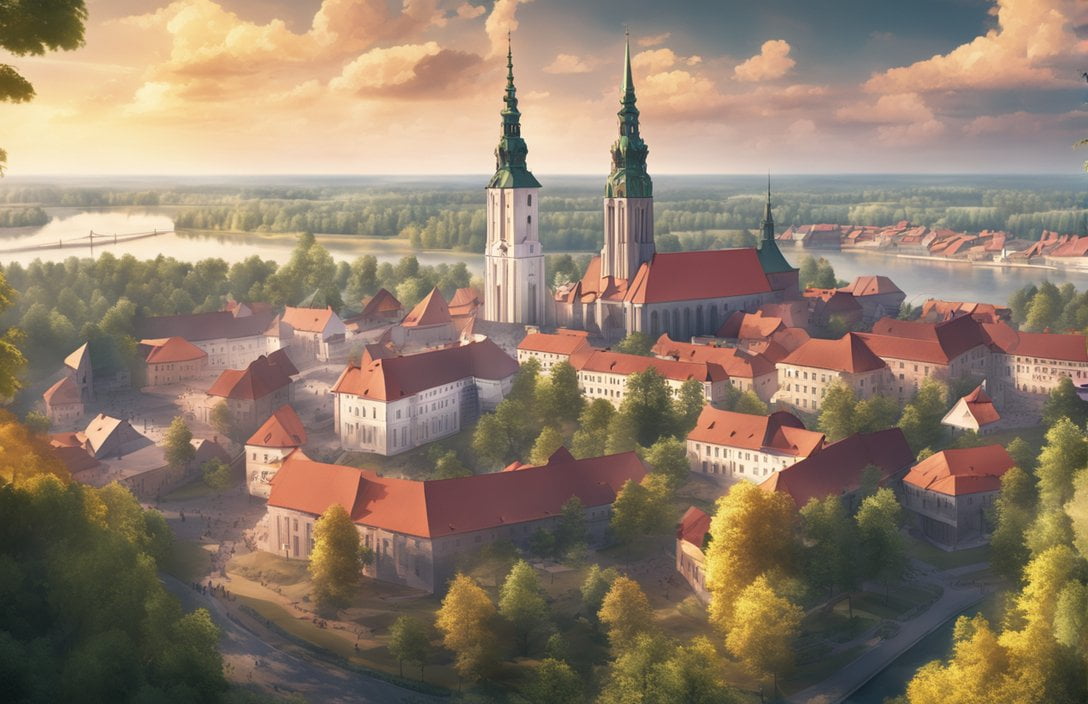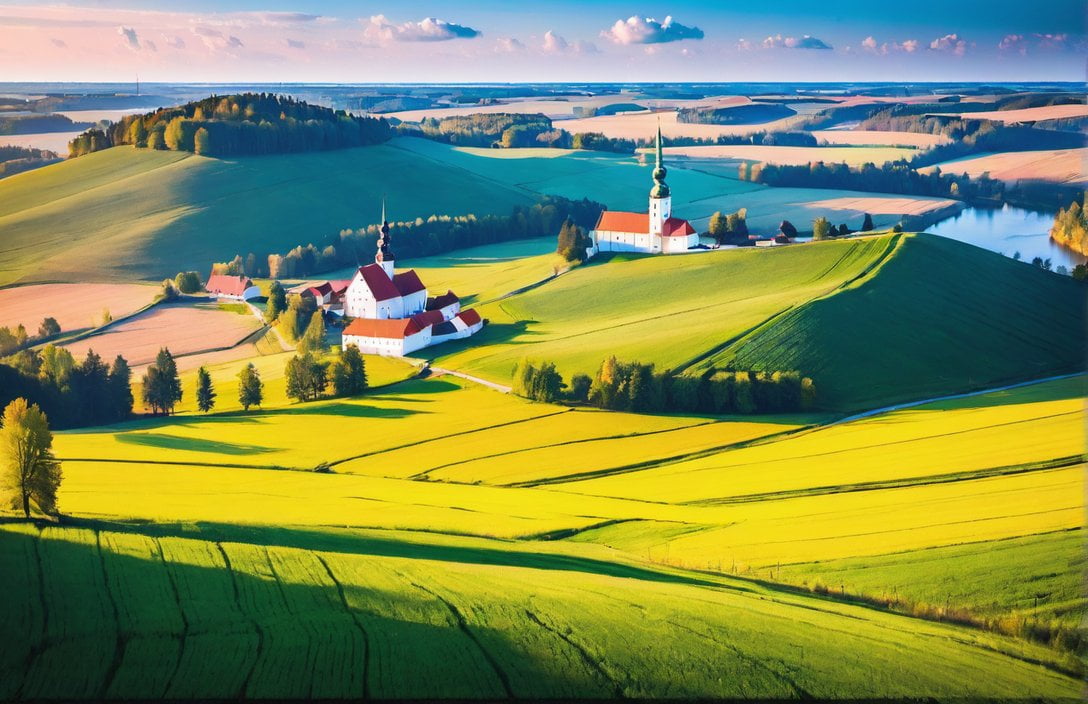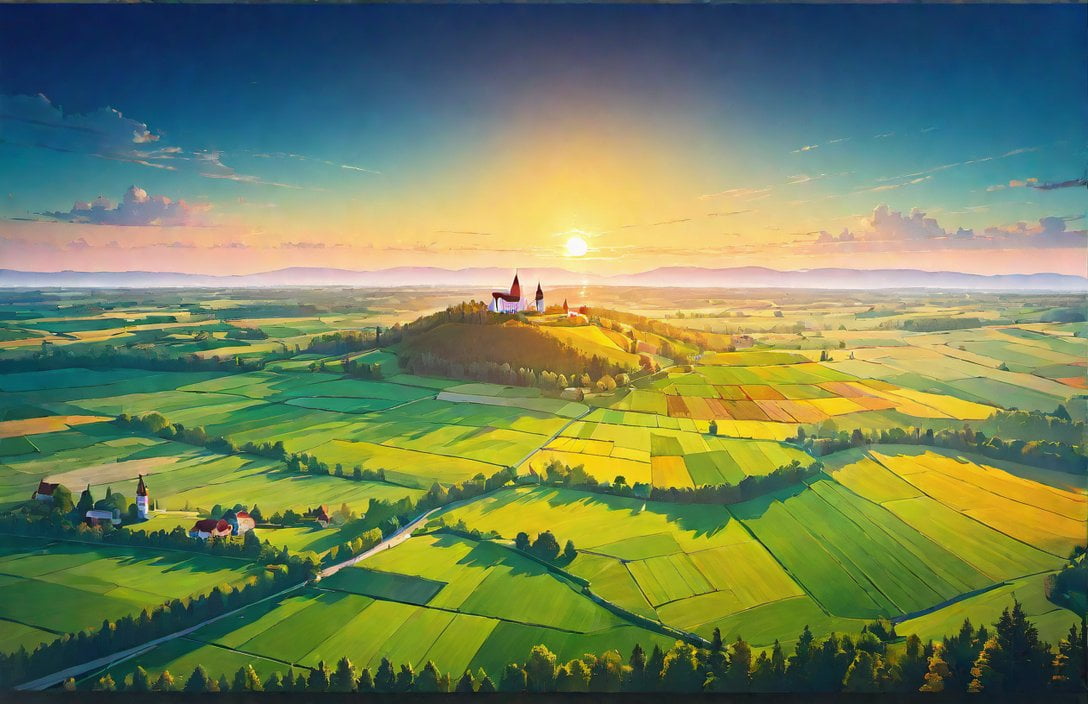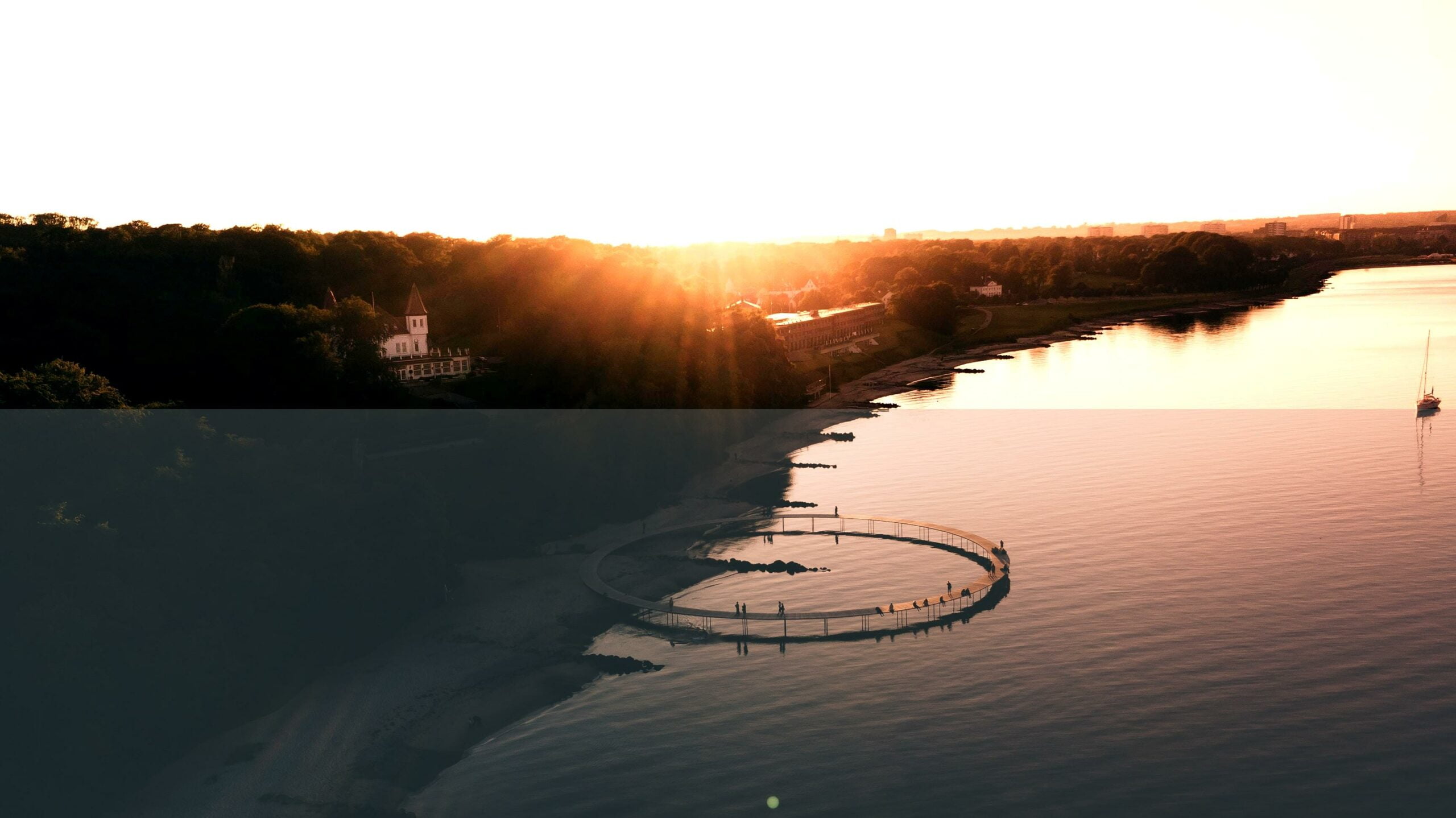Journey with us as we delve into the fascinating world of Lithuania and discover its hidden treasures. From its vibrant traditions to its rich history, this beautiful Baltic country never fails to captivate visitors with its unique charm. In this article, we will uncover a variety of intriguing fun facts that will leave you in awe of Lithuania’s rich cultural heritage. Join us as we embark on a journey through Lithuania’s captivating traditions and explore the quirks that make this country truly one-of-a-kind.
Key Takeaways:
- Lithuania is the largest and southernmost of the three Baltic countries
- The country gained independence from the Soviet Union in 1990
- Lithuania’s flag represents the sun, countryside, courage, and bravery
- Vilnius is the capital known for its baroque architecture and Old Town
- Lithuania has beautiful natural landscapes with lakes and a coastline
- The country has a rich cultural heritage, including traditional folk music and dance
- The Lithuanian language is one of the oldest in the world
- Lithuania is a high-income country with free and compulsory schooling
- The White Stork is the national bird and symbolizes peace and good luck
- Lithuania is one of the fastest developing economies
- The geographical center of Europe is in Lithuania
- The Curonian Spit is a UNESCO World Heritage Site and popular tourist attraction
- Lithuania was the last pagan nation in Europe
- Lithuanians are known for their love of basketball.
Lithuania Fun Facts
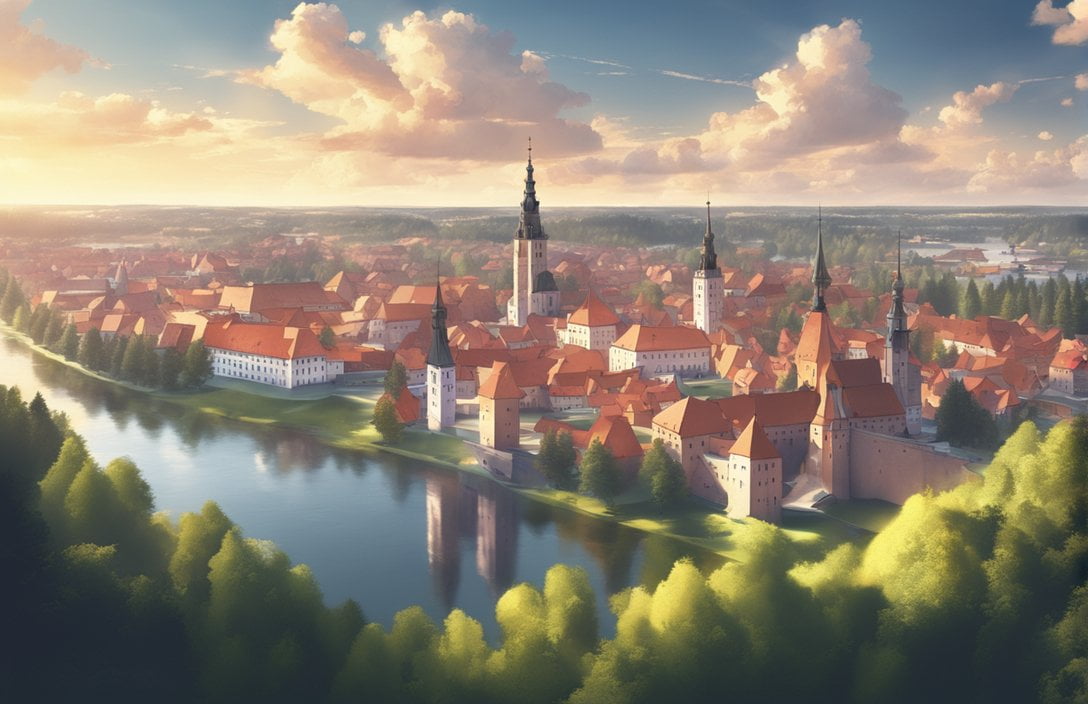
Lithuania is a country filled with fascinating facts and hidden gems just waiting to be discovered. From its rich history to its vibrant traditions, there is no shortage of quirks and captivating elements that make Lithuania truly unique. So, let’s dive into some Lithuania fun facts that will leave you enlightened and entertained.
A Baltic Gem
Lithuania is the largest and southernmost of the three Baltic countries, nestled between Estonia and Latvia. Its stunning landscapes and thriving cities make it a true gem of the region. Speaking of cities, the capital of Lithuania is Vilnius, known for its breathtaking baroque architecture and the well-preserved charm of its Old Town.
Unique Symbols
The Lithuanian flag is more than just a piece of colored fabric. It embodies the spirit and values of the country. With horizontal stripes in yellow, green, and red, the flag tells a story. The yellow represents the sun, symbolizing warmth and hope. Green represents the lush Lithuanian countryside and its connection with nature. Finally, red stands for courage and bravery, traits that are deeply rooted in Lithuanian history.
Nature’s Beauty
Lithuania is a country that perfectly balances urban charm with natural beauty. With over 2,800 lakes and a picturesque coastline along the Baltic Sea, it’s no wonder that Lithuania is known for its stunning landscapes. One of its most notable natural attractions is the Curonian Spit, a UNESCO World Heritage Site. This shifting sand dune formation is a sight to behold and a must-visit for travelers.
Cultural Heritage
Lithuania takes great pride in its rich cultural heritage. Traditional folk music, dance, and art are deeply ingrained in the country’s identity. In fact, Lithuania’s folk songs, called dainos, are considered a UNESCO intangible cultural heritage. These timeless melodies have been passed down through generations, preserving the soul of the nation and captivating audiences with their haunting beauty.
Linguistic Legacy
Did you know that the Lithuanian language is one of the oldest languages in the world? It has been spoken for over 4,000 years and is considered one of the most archaic Indo-European languages. This linguistic legacy adds yet another layer of richness to the cultural tapestry of Lithuania.
Meeting Point of Europe
Lithuania proudly holds the geographical center of Europe within its borders. In the village of Purnuškės, a monument symbolizes the meeting point of Western and Eastern Europe. It serves as a reminder of the country’s unique position bridging two worlds and the historical significance of Lithuania in connecting different cultures.
Bringing Good Luck
Bird enthusiasts rejoice because Lithuania has a national bird. Not just any bird, but the graceful White Stork. Designated as Lithuania’s national bird in 1973, the White Stork is considered a symbol of peace and brings good luck. In rural areas, spotting one of these majestic creatures is believed to bring blessings and prosperity.
Love for Basketball
Basketball runs deep in the veins of Lithuanians. The country has a passion for this sport like no other. Lithuania has achieved great success in international competitions, winning numerous medals in basketball. The love for the game unites the nation, creating a sense of pride and camaraderie among Lithuanians.
Progress and Vision
Despite its relatively small size, Lithuania has made significant progress and is recognized as one of the world’s fastest developing economies. Innovation and entrepreneurship thrive in this Baltic nation, shaping a future that embraces sustainability, technological advancements, and a high quality of life for its people.
Embrace the Quirks
In a world filled with unique countries, Lithuania stands out as a true gem with its history, traditions, and captivating quirks. Whether you’re planning a visit or simply curious about this Baltic treasure, take a moment to appreciate the heritage, natural beauty, and vibrant traditions that Lithuania has to offer. Welcome to a land where time-honored traditions meet the wonders of nature, creating an enchanting tapestry of experiences.
Explore the fascinating facts about Lithuania and uncover the rich history and culture of this enchanting Baltic country. Learn more about Lithuania with our comprehensive guide to facts about Lithuania.
Discover interesting facts about the Samoan islands and delve into the unique traditions and customs of this captivating Polynesian nation. Immerse yourself in the beauty of Samoan culture with our detailed collection of facts about Samoan.
Embark on a journey to Tasmania and uncover the surprising wonders of the island. From its breathtaking landscapes to its diverse wildlife, there is so much to discover about Tasmania. Dive into our compilation of fascinating facts about Tasmania and be amazed!
Delve into the history and heritage of the Lithuanian people and gain a deeper understanding of their traditions and contributions. Uncover intriguing facts about Lithuanians that will leave you intrigued and inspired.
Curious to learn more about Lithuania? Uncover interesting and lesser-known facts about this Baltic gem. From its stunning architecture to its vibrant cultural scene, Lithuania has so much to offer. Embark on a journey of discovery with our collection of interesting facts about Lithuania.
interesting facts about lithuania
Lithuania is known for its beautiful landscapes
Lithuania, one of the three Baltic States in northeastern Europe, is a country that boasts breathtaking natural beauty. From its stunning coastline along the Baltic Sea to its expansive forests and shimmering lakes, Lithuania offers a haven for nature enthusiasts and adventure seekers alike. Let’s explore the captivating landscapes that make Lithuania truly unique.
The Curonian Spit: A UNESCO World Heritage Site
One of the most remarkable natural wonders in Lithuania is the Curonian Spit, a narrow strip of land stretching along the Baltic Sea. Designated as a UNESCO World Heritage site, this mesmerizing area is a true testament to the country’s awe-inspiring landscapes. It features shifting sand dunes, picturesque beaches, and lush pine forests. Walking along the Curonian Spit feels like stepping into a fairytale, where tranquility and natural beauty envelop every step.
Expansive Forests and Serene Lakes
Lithuania takes pride in its expansive forests, which cover around a third of the country. These ancient woodlands are home to a diverse range of flora and fauna, offering a haven for wildlife. Whether you’re an avid hiker or simply seeking solace in nature, Lithuania’s forests provide an idyllic setting to escape the hustle and bustle of everyday life.
The country is also blessed with numerous serene lakes that dot its landscape. Among them, Lake Plateliai stands out as the largest natural lake in Lithuania. With its crystal-clear waters and picturesque surroundings, it’s no wonder that this lake attracts visitors who long for tranquility.
The Baltic Coast: Where Beauty Meets Serenity
Lithuania’s Baltic coast is a true gem, offering a stunning blend of beauty and serenity. From wide sandy beaches to picturesque cliffs, the coastline is an ideal spot for relaxation and recreation. The seaside towns and resorts along the coast provide a perfect retreat for those seeking to bask in the sun, partake in water sports, or simply enjoy a leisurely stroll along the shore. Immerse yourself in the soothing rhythm of the Baltic Sea, and let the beauty of Lithuania’s coastline captivate your senses.
Key Takeaways:
- The Curonian Spit, a UNESCO World Heritage Site, showcases Lithuania’s breathtaking landscapes with its shifting sand dunes, picturesque beaches, and lush pine forests.
- Lithuania’s expansive forests cover around a third of the country, providing a haven for wildlife and a serene escape for hikers and nature lovers.
- Serene lakes, including Lake Plateliai, offer crystal-clear waters and picturesque surroundings, creating an ideal setting for tranquility.
- Lithuania’s Baltic coast boasts wide sandy beaches, stunning cliffs, and tranquil seaside towns, providing a perfect retreat for relaxation and recreation.
Sources:
– Facts.net
– Country FAQ
Lithuania’s Quirky and Captivating Fun Facts: Exploring the Rich Traditions
Lithuania, a country nestled in northern Europe and the largest of the Baltic nations, is full of unique and interesting cultural traditions that have captivated visitors from around the world. From hot air balloons to green rivers, Lithuania is a land of surprises and rich heritage. Let’s dive into some of the most intriguing fun facts about this remarkable country.
Hot Air Balloons and Vibrant Traditions
One of the first facts that might catch your attention is that Lithuania is known as the hot air balloon capital of the world. With the highest ratio of hot air balloons per person, it’s not surprising that this captivating sight has become synonymous with the country’s traditions. Picture the sky filled with colorful balloons, dotting the horizon and creating a breathtaking spectacle.
Cepelin: A Dish Named After Zeppelins
When it comes to unique culinary experiences, Lithuania offers something truly special. The national dish, Cepilin, is named after zeppelins and is made up of meatball-sized dumplings mixed with potatoes and cheese. This hearty and delicious meal encapsulates the country’s culinary traditions and is a must-try for any food enthusiast.
Emerald Rivers and St. Patrick’s Day
In celebration of St. Patrick’s Day, Lithuania takes a unique twist by dyeing the River Vilnia emerald green. This captivating sight showcases the country’s vibrant spirit and love for festivities. Imagine walking along the riverbanks, surrounded by a shimmering emerald hue, while embracing the joyous atmosphere of this special day.
High-Speed Internet and Ancient Trees
Did you know that Lithuania boasts relatively fast internet speeds? In this digital age, this fact is certainly worth noting for both travelers and locals alike. But Lithuania’s wonders go beyond technology. The country is home to one of the oldest trees in Europe, a testament to its rich natural heritage. Standing tall and majestic, this ancient tree holds centuries of history within its sturdy branches.
Vodka from Corn and Basketball Fever
Lithuania has also left its mark in the world of spirits. It was in this remarkable country that the discovery of making vodka from corn was made. This revelation has influenced the way we appreciate and enjoy this popular beverage today.
Basketball holds a special place in the hearts of Lithuanians, symbolizing liberation and resilience. Despite limited funds, Lithuanian basketball players won a bronze medal at the 1992 World Olympics in Barcelona, showcasing their determination and skill on an international stage.
Fusion of Heritage and Nordic Influences
The culture of Lithuania is a beautiful fusion of an indigenous heritage, represented by the unique Lithuanian language, and Nordic cultural aspects intertwined with Christian traditions. This blending of influences creates a cultural tapestry that is both intriguing and captivating. From the language to the traditional arts and architecture, Lithuania’s culture is an enchanting journey through time and human expression.
Key Takeaways:
- Lithuania is known as the hot air balloon capital of the world, offering a breathtaking spectacle of colorful balloons.
- The national dish, Cepilin, is a delicious blend of dumplings, potatoes, and cheese.
- The River Vilnia is dyed emerald green each year for St. Patrick’s Day, adding a touch of magic to the festive celebrations.
- Lithuania boasts relatively fast internet speeds, catering to the needs of digital enthusiasts.
- One of Europe’s oldest trees stands tall in Lithuania, reminding us of the country’s ancient history.
- Lithuania played a significant role in discovering vodka made from corn, influencing the world of spirits.
- Passionate about basketball, Lithuanians have achieved remarkable success in international competitions, making their mark in sports history.
- Lithuania’s culture is a captivating blend of indigenous heritage, Nordic influences, and Christian traditions, creating a unique and vibrant tapestry.
Sources:
1. Karolina Patryk. “Fun Lithuania Facts That You Probably Haven’t Heard Of.” Retrieved from karolinapatryk.com
2. Nomads Unveiled. “20 Interesting And Fun Facts About Lithuania.” Retrieved from nomadsunveiled.com
Lithuania’s Quirky and Captivating Fun Facts: Exploring the Rich Traditions
Lithuania, a country located in Northern Europe, has a fascinating history and a vibrant culture that is sure to captivate any visitor. One aspect that sets Lithuania apart is its collection of UNESCO World Heritage Sites. These sites offer a glimpse into the country’s cultural and natural heritage, providing a unique and enriching experience for tourists.
Exploring the Hill of Crosses: A Symbol of Devotion and Religious Heritage
One of the most iconic and sacred sites in Lithuania is the Hill of Crosses. Situated in the northern part of the country, near the city of Šiauliai, this hill is steeped in religious significance and stands as a powerful testament to the devotion of the Lithuanian people.
Key Takeaways:
– The Hill of Crosses is adorned with over 100,000 crosses, crafted from various materials such as wood, metal, and stone.
– This mesmerizing sight represents the deep faith and resilience of the locals.
– Its history dates back to the 19th century, when people began leaving crosses on the hill to express their faith and stand against oppression.
– Despite numerous attempts to demolish the site during the Soviet era, the hill grew in size and significance, becoming a symbol of perseverance and a pilgrimage site for both Catholic and Orthodox Christians.
Discovering the Curonian Spit: A Nature Lover’s Paradise
Another UNESCO World Heritage Site in Lithuania is the Curonian Spit. This unique natural wonder, located in the Kalipeda Region, offers a breathtaking landscape that will surely captivate nature enthusiasts.
Key Takeaways:
– The Curonian Spit stretches for 98 kilometers, separating the Curonian Lagoon from the Baltic Sea.
– Its most notable feature is its stunning sand dunes, some of which reach impressive heights of up to 60 meters.
– The peninsula is a haven for outdoor activities such as hiking, biking, and kiteboarding, attracting adventurers from all over the world.
– Beyond its sand dunes, the Curonian Spit boasts diverse ecosystems including pine forests, wetlands, and coastal meadows, providing a habitat for various plant and animal species.
To visit these unique UNESCO World Heritage Sites, reaching them is convenient. The Hill of Crosses is easily accessible near Šiauliai and can be reached by car or public transportation. The Curonian Spit, on the other hand, is best accessed by ferry or by crossing the bridge from Klaipeda.
By exploring these captivating UNESCO World Heritage Sites, travelers can experience the profound religious heritage and breathtaking natural wonders that Lithuania has to offer. Whether one is seeking spiritual devotion or outdoor adventures, these sites are sure to leave a lasting impression.
Sources:
1. Fun Facts About Lithuania – ShareFunFacts.com
2. True Lithuania – UNESCO sites in Lithuania
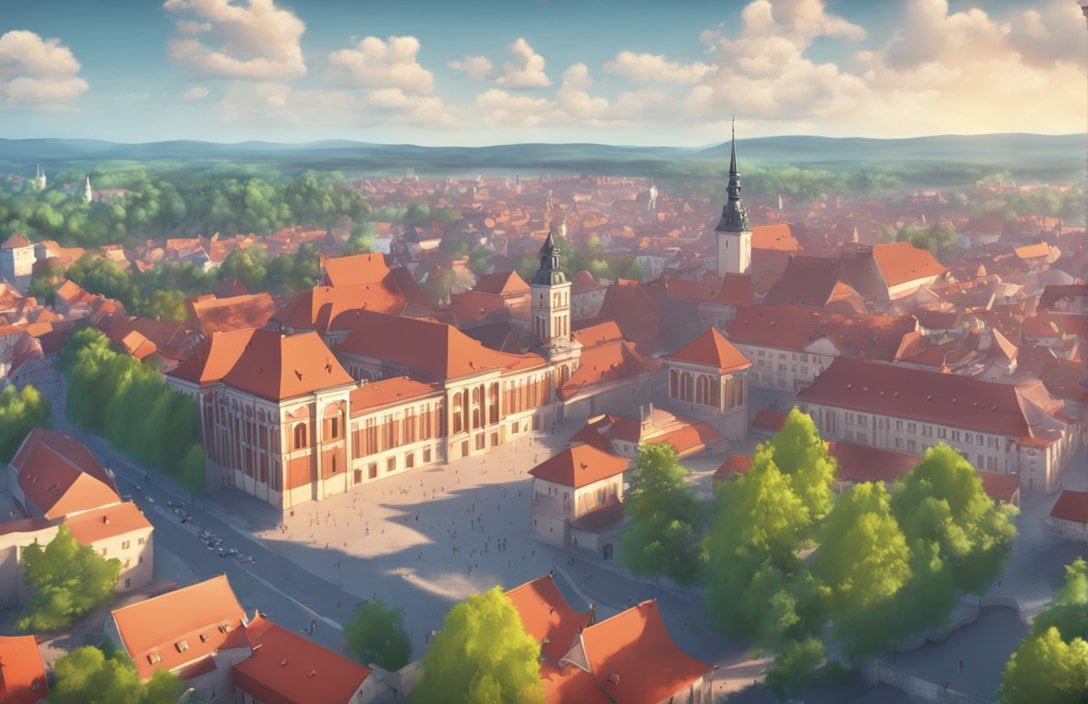
FAQ
Q1: What is the significance of the Hill of Crosses in Lithuania?
A1: The Hill of Crosses in Lithuania is a symbol of devotion and religious heritage. It is adorned with over 100,000 crosses made of wood, metal, and stone, representing the deep faith of the locals.
Q2: How did the Hill of Crosses become a pilgrimage site?
A2: The history of the Hill of Crosses dates back to the 19th century when people started leaving crosses on the hill as a way to express their faith and resistance against oppression. Despite attempts to demolish the site during the Soviet era, the hill grew in size and significance, becoming a symbol of resilience and attracting both Catholic and Orthodox Christians.
Q3: What is the Curonian Spit and why is it a UNESCO World Heritage Site?
A3: The Curonian Spit is a unique natural wonder located in Lithuania that separates the Curonian Lagoon from the Baltic Sea. It is known for its stunning sand dunes, some of which reach up to 60 meters in height. The Curonian Spit is recognized as a UNESCO World Heritage Site due to its unique and fragile ecosystem, which includes diverse habitats such as pine forests, wetlands, and coastal meadows.
Q4: What activities can be done on the Curonian Spit?
A4: The Curonian Spit offers a picturesque landscape that attracts outdoor enthusiasts. Visitors can enjoy activities such as hiking, biking, and kiteboarding. The stunning sand dunes and diverse ecosystems make it a perfect destination for nature lovers.
Q5: How can one visit the Hill of Crosses and the Curonian Spit in Lithuania?
A5: The Hill of Crosses is located near Šiauliai and can be accessed by car or public transportation. The Curonian Spit is best reached by ferry or by crossing the bridge from Klaipeda. Both sites are easily accessible for visitors.
- HelpCare Plus: Revolutionizing Affordable and Accessible Healthcare - December 29, 2024
- Boom & Bucket: Your Digital Marketplace for Used Heavy Equipment - December 28, 2024
- Ankle Bones Crossword Clue: Solutions, Tips & Anatomical Insights - December 28, 2024
